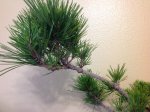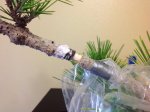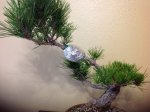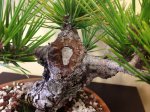Cmanz
Yamadori
After two previous failed attempts, over a three year period, I have roots. I started this attempt in late May of 2014. I used the ring bark method coupled with a wire tourniquet. I also applied a 3% IBA talc based hormone. This was my first attempt using a strong hormone mix. The tree is a pinus thunbergii 'Hayabusa'.







